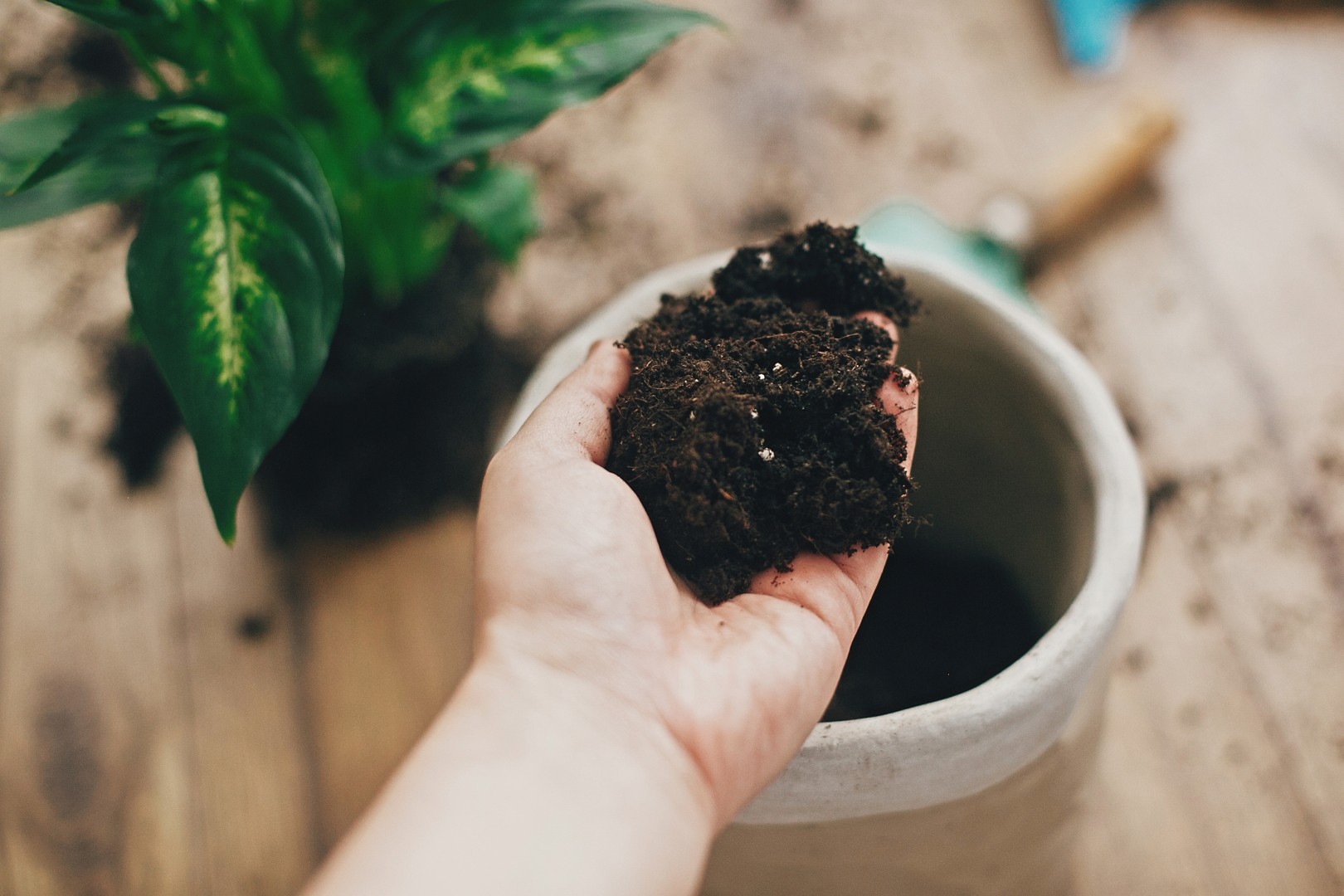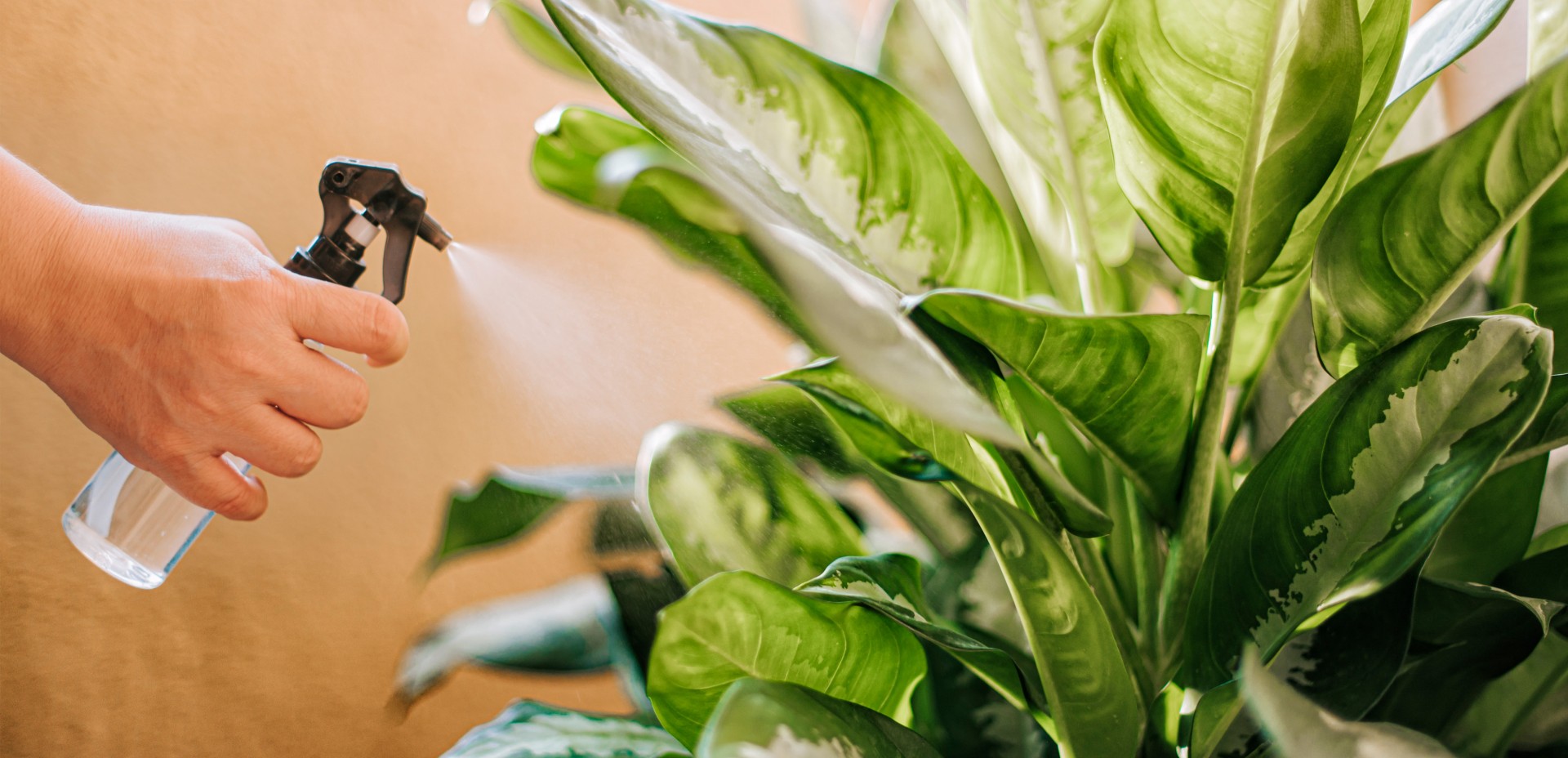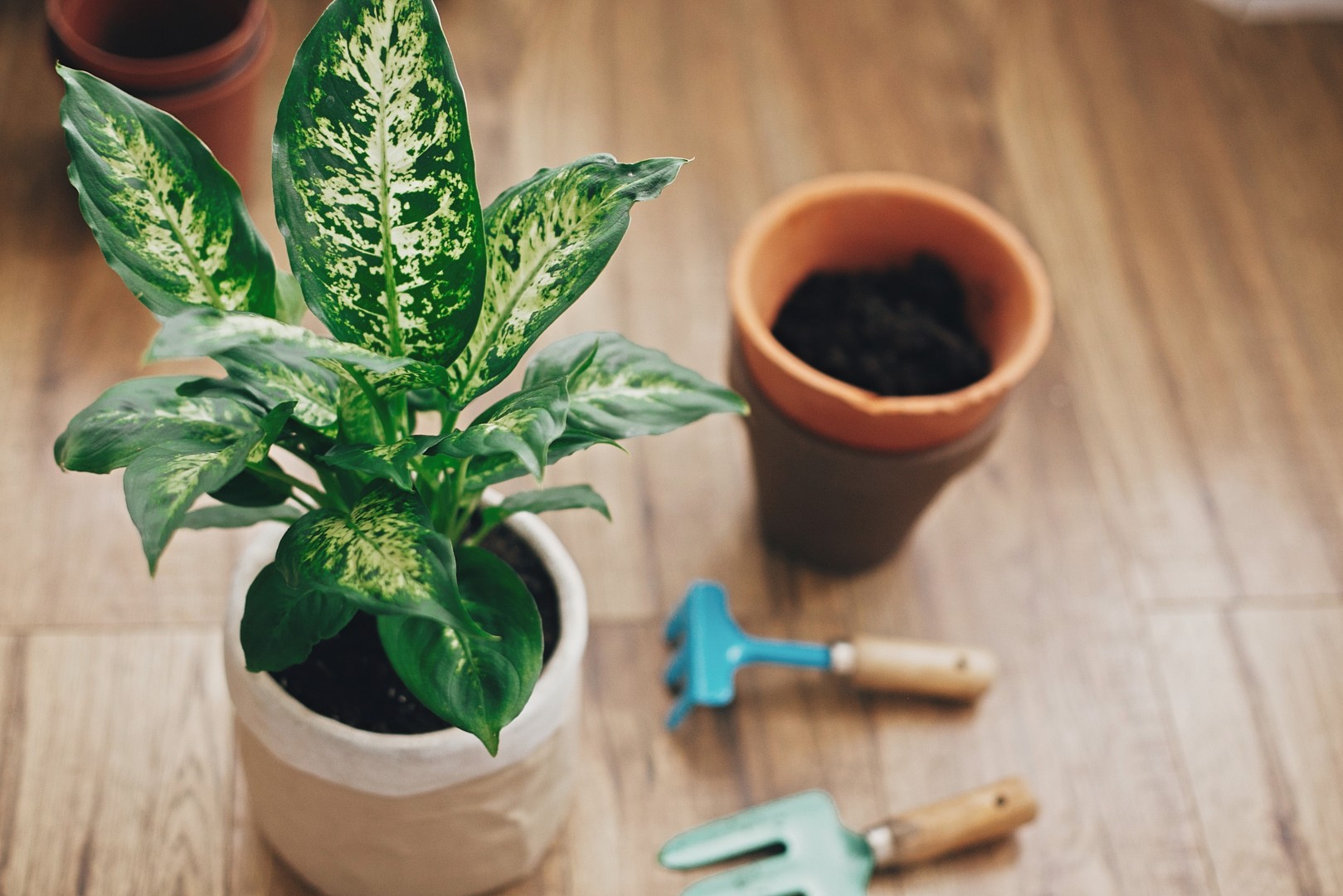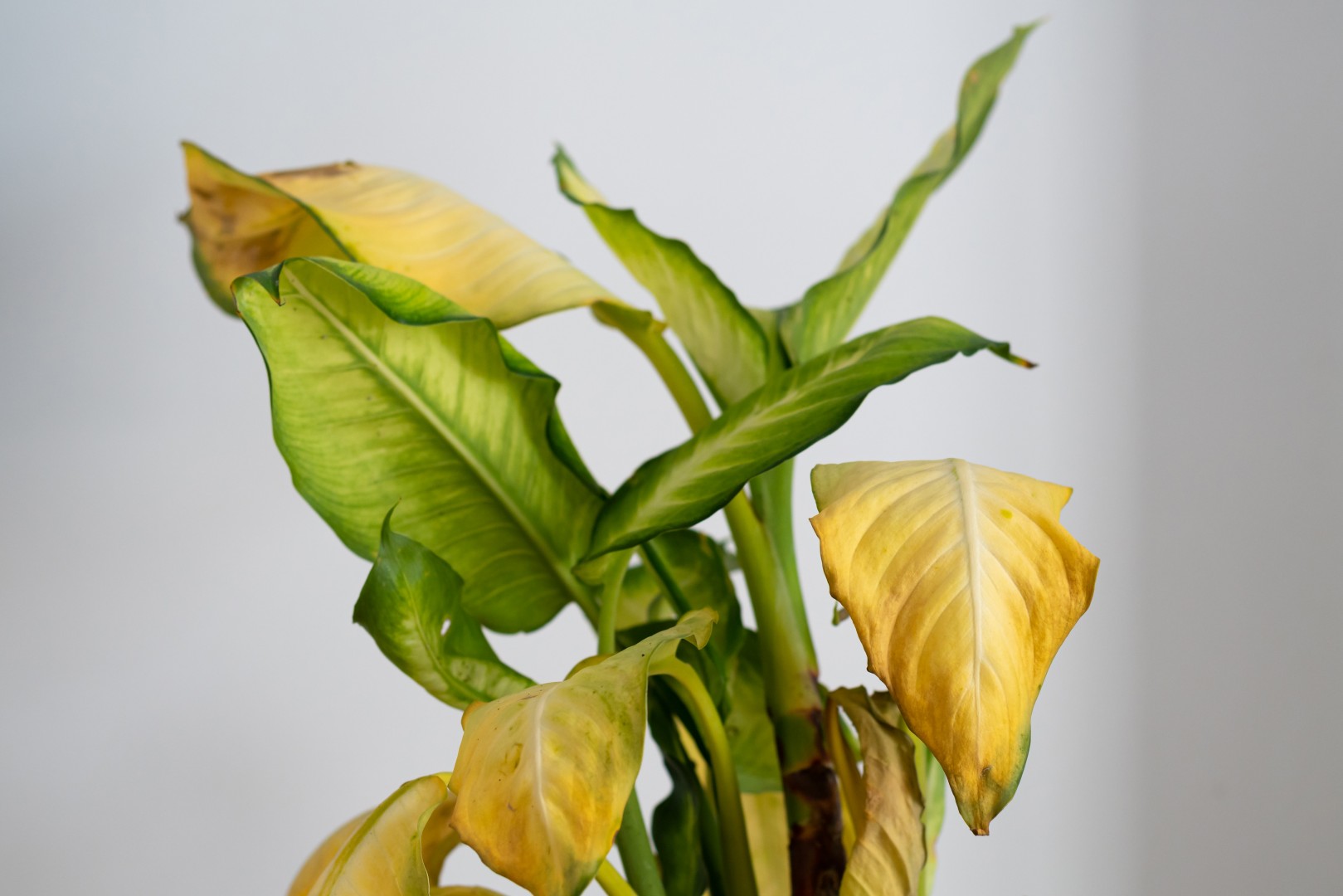
The Dieffenbachia is a great choice for any space due to its bold patterns and air-purifying abilities. Sometimes called "Dumb Cane" due to the numbing effect caused by ingesting its leaves (not recommended), Some examples of Dieffenbachia are Dieffenbachia Camille and Dieffenbachia Compacta. The dumb cane plant, also known as Dieffenbachia, is poisonous to cats and dogs. Keep it away from pets and kids, as eating it can upset their stomachs.
Dieffenbachia plants are popular indoor houseplants because of their ability to do well in shady and lower light conditions. However, they do thrive with very bright light. The plant favors the side facing the light, so a good tip is to rotate the plant regularly to ensure all sides benefit from the sunlight. Keep your Dieffenbachia plant in bright light to help maintain its variegation!

Using a well-draining & high peat-based soil mix will ensure that the plants roots will not develop root rot or damage the roots. Keep the soil moist but not oversaturated and this will ensure that your Dieffenbachia stays looking its best!
During its grow season – Dieffenbachia plants like regular moisture and do not like their soil to dry out fully. During their growing season (Spring/Summer), these plants prefer to receive more frequent watering. Ensure that only the top few inches of soil dry out between waterings. If you let the whole pot of soil dry out, then your plant can be at risk for dying early.
You should fertilize the Dieffenbachia plant every 4-6 weeks during its growing season. By doing this you provide your plant with nutrients to help it grow quickly and stay healthy. Using a diluted liquid fertilizer is the best way to help your Dieffenbachia grow.

Dieffenbachia plants do best in warmer and more humid conditions. The ideal temperature range to keep these plants in is between 15-24ºC (60-75ºF). If the temperature drops below this threshold or exposed to cold drafts of air – it is likely to lose leaves or deteriorate quickly.
Keeping this plant in a warm humid environment is sure to keep it happy. You can also help increase the humidity by lightly misting your plant or placing a humidifier nearby.
The easiest way to propagate Dieffenbachia is through root, tip, or stem cuttings. Simply cut a piece from the plant using sharp, clean scissors, then plant it in well-draining soil. Water thoroughly and place the cutting in a warm spot with indirect sunlight.
Keep the soil moist but not over saturated. New roots should form within 3 to 8 weeks. You can also propagate the cutting in water, then transfer it to soil once the roots develop.

Dieffenbachia plants often need annual repotting. Keep an eye out for signs of plant stress – such as roots emerging from the surface, falling leaves or excessive crowding of its leaves. These are all indicators that your plant may need to be repotted.
To repot your plant, carefully remove it from its current pot, remove all old soil and place it into a larger pot with fresh moist soil. After repotting your Dieffenbachia, give it some time to adjust to its new setting before resuming a regular routine.
Discoloration of leaves is most commonly due to overwatering or not evenly watering. Browning tips indicate that your soil is not being evenly watered. Ensure when watering that the soil is evenly moist, and that the roots get the water that they need.
Over-watering can quickly lead to the death of your plant. Ensure your pot has a hole at the bottom for water to drain out.
Make sure there is a hole at the bottom of your pot for water to drain. If there isn't, remove the plant from the pot and water it over a sink. This will allow any excess water to flow away.

Drooping leaves can be an indicator of your plant not receiving the amount of water it needs. When the top few inches of your soil feel dry to the touch then it's time to give your plant a good watering. If the soil is moist however and your leaves are still drooping, then you may be overwatering your plant. Reduce the frequency of your waterings or saturate the soil a little less to help reduce this excess water.
The loss of white variegation on Dieffenbachia leaves can be attributed to several factors. Insufficient light, such as low light conditions, can cause the plant to produce leaves with less pronounced variegation or solid green leaves. Additionally, nutrient deficiencies may occur, as variegated plants often require more nutrients than solid green varieties to maintain their coloration.
Natural aging can also play a role, with older leaves gradually losing their variegation over time. Environmental stressors like temperature fluctuations, drafts, or overwatering can weaken the plant and contribute to variegation loss. Pests or diseases can further exacerbate the issue.
To mitigate variegation loss, it's crucial to provide adequate light, nutrients, and stable environmental conditions while monitoring for pests and diseases. If variegation loss persists, propagation from healthy, variegated stems may be considered to maintain the plant's unique characteristics.
Dieffenbachia is toxic to pets.